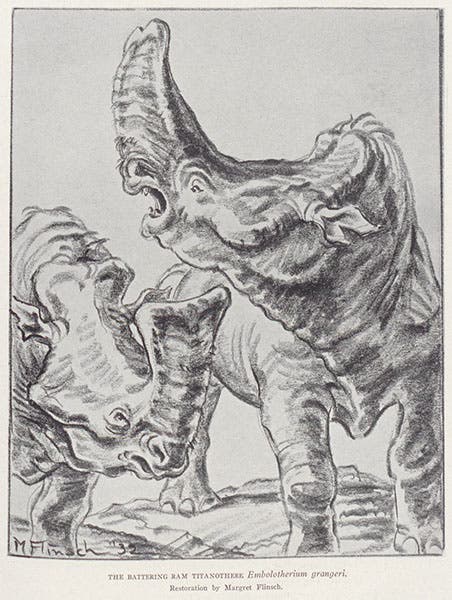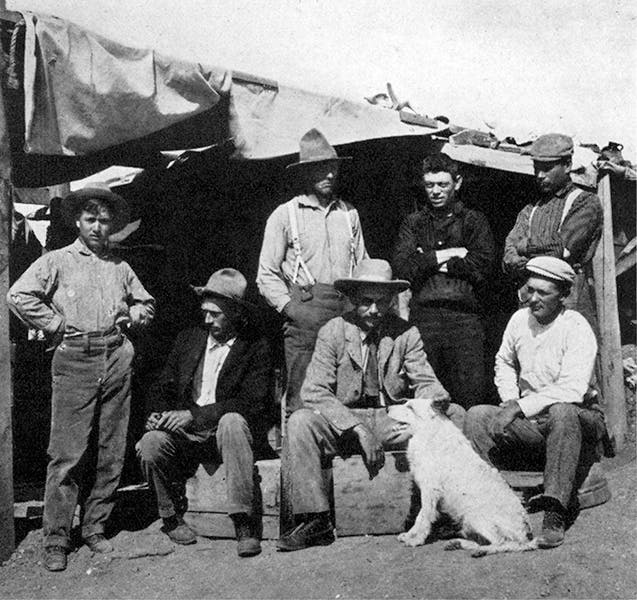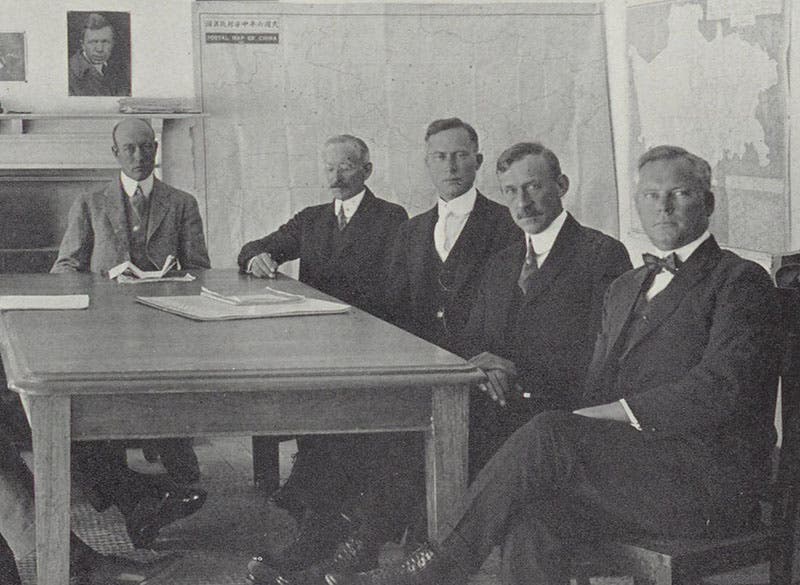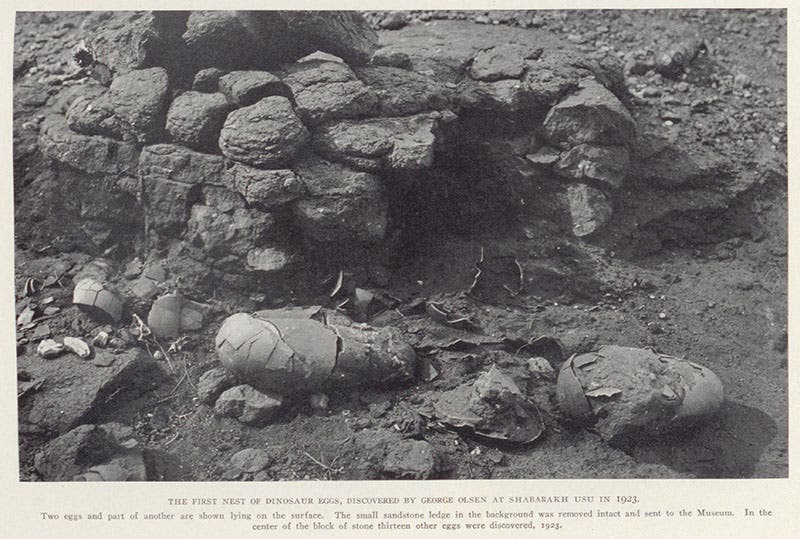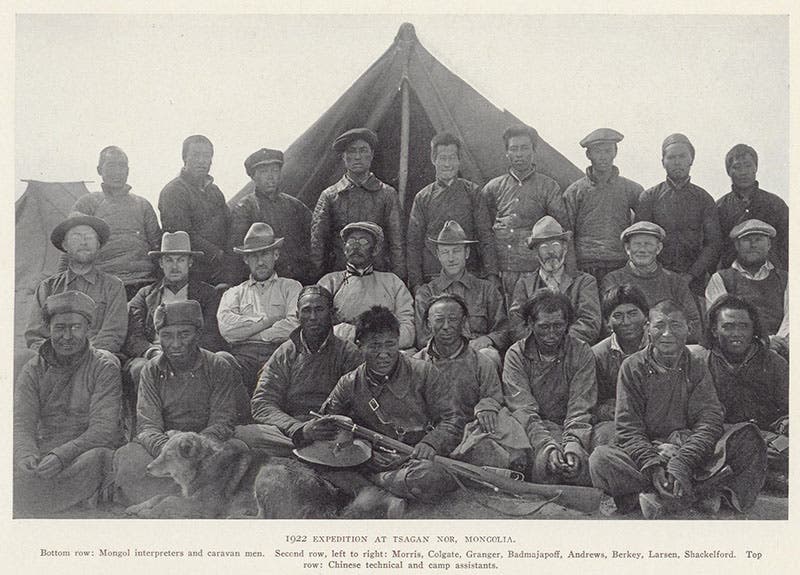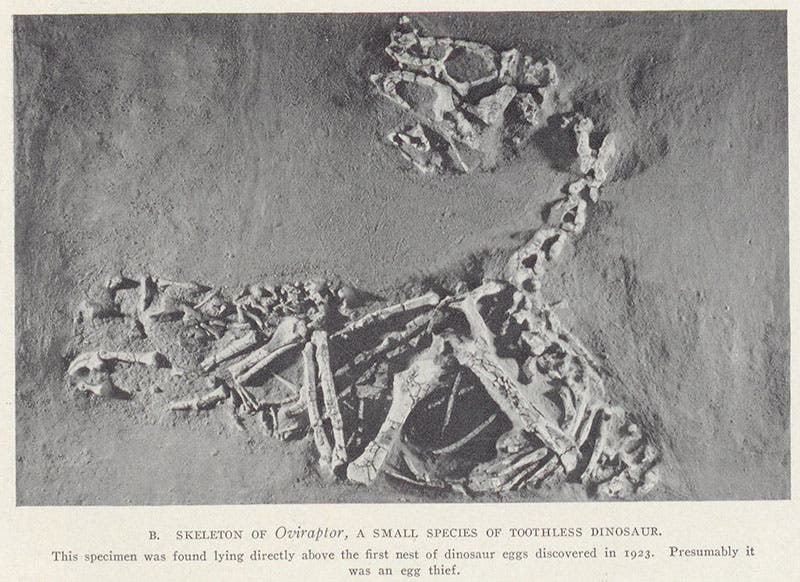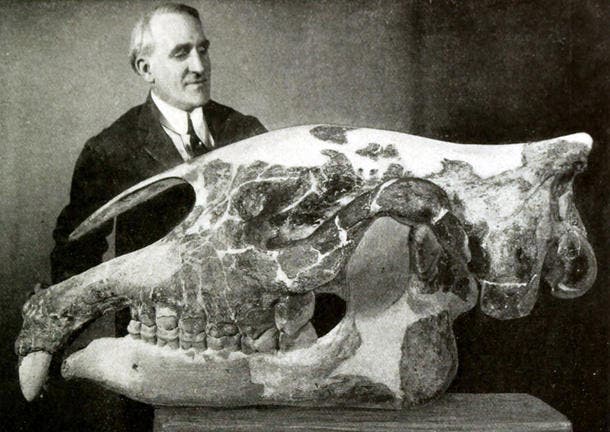Scientist of the Day - Walter Granger
Walter Granger, an American paleontologist, died Sep. 6, 1941, at the age of 68. Granger grew up in Vermont, and taught himself taxidermy as a boy. At the age of 18, he showed up at the American Museum of Natural history (AMNH) in New York and was hired by the custodial department, rather like Kris Kristofferson at Columbia Studios in Nashville. The talents of both men rapidly became apparent, and Granger was soon stuffing specimens; in 1894, he got his chance to go on a field trip out West, and he soon knew that he wanted to be a field man for the rest of his life, which he was. In 1897, again out west, Granger discovered the Bone Cabin Quarry in Wyoming, a rich rockucopia of dinosaur bones, so named because a former prospector had built an entire cabin out of fossilized dinosaur bones that he picked up (we hope he had some help) off the ground. The site would produce many fine dinosaur specimens, including the Brontosaurus (Apatosaurus) that was erected in the AMNH in 1905. In the often-reproduced group portrait of the 1899 Bone Cabin Quarry party (third image), Granger is seated at left, right next to Henry F. Osborn, who would become museum president in 1906.
Granger soon turned from dinosaurs to mammals, becoming one of the world's experts on Paleocene mammals, which were mostly tiny shrew-like things just released from dinosaur dominion, and diversifying rapidly. Granger worked on mammals until 1921, by which time he was the principal vertebrate paleontologist at the Museum. But then he was invited to join the museum’s Central Asiatic Expeditions to Mongolia to look for the origins of ancient man. The expedition was led by the flamboyant Roy Chapman Andrews, and Granger was not only the principal paleontologist on this and four subsequent expeditions, from 1922 to 1930, he was also second in charge to Andrews.
The five Mongolian expeditions were spectacular. Since there was not a foot of railroad track in Mongolia, and no rivers for transport, Andrews opted for motor cars to get his team from place to place. There were no roads either, but that seems to have been no deterrent. The supply chain of gasoline, oil, tires, and food was provided by long caravans of camels. You can see photos of the Dodge cars and camel trains at our post on Andrews.
By all accounts (principally that of Edwin H. Colbert in his engaging: Men and Dinosaurs: The Search in Field and Laboratory, 1968), Granger was a welcome addition to the team, friendly, encouraging, liked by everyone. From the many photos taken during the Central Asiatic Expeditions, he seems to have been quite laid back, probably a welcome contrast to Andrews the showman. And he knew his bones. Although the expeditions were sent out to find clues to human origins in Asia, most of the fossils discovered were mammals and dinosaurs, including the first dinosaur eggs in situ ever found (fifth iimage), several new and now famous dinosaurs, such as Velociraptor, Protoceratops, and Oviraptor (seventh image), and a wealth of mammals, some tiny, and some huge, like the brontotheres (which Granger calls titanotheres) unearthed (unsanded?) in abundance. The most dramatic of these (in my opinion) were the four standing legs of a Baluchitherium, apparently caught by a storm and buried where he stood (eighth image). Granger also brought back a skull of his Baluchitherium behemoth (ninth image). It would later acquire the species name B. grangeri, before the entire family was later renamed. I believe that another brontothere Granger found, Embolotherium grangeri (see first image for an artist’s restoration) still retains his name.
Many of the Mongolian discoveries were described in various museum house journals, but we have used here mostly images from a book, The New Conquest of Central Asia: A Narrative of the Explorations of the Central Asiatic Expeditions in Mongolia and China, 1921-1930, published in 1932, edited by Andrews, with contributions by Granger and others. The volume, a thick quarto, has 126 full-page plates, mostly black-and-white photos taken on the expeditions. There are other photos in the AMNH archives that were not used for the book, and we have included several of those here as well.
In our exhibition on the history of dinosaur discovery, Paper Dinosaurs, 1824-1969, we displayed two items relevant to Granger and the Central Asiatic Expeditions. One was a 1926 article by Granger and William Matthew, showing the Protoceratops skull in situ. The other was a 1924 paper by Henry F. Osborn describing and naming Velociraptor and Oviraptor. Although Osborn did not discover any of the Mongolian dinosaurs, he got to exercise his privilege as the man in charge by writing the first descriptions. Fortunately, he let Granger name and describe Protoceratops.
William B. Ashworth, Jr., Consultant for the History of Science, Linda Hall Library and Associate Professor emeritus, Department of History, University of Missouri-Kansas City. Comments or corrections are welcome; please direct to ashworthw@umkc.edu.


